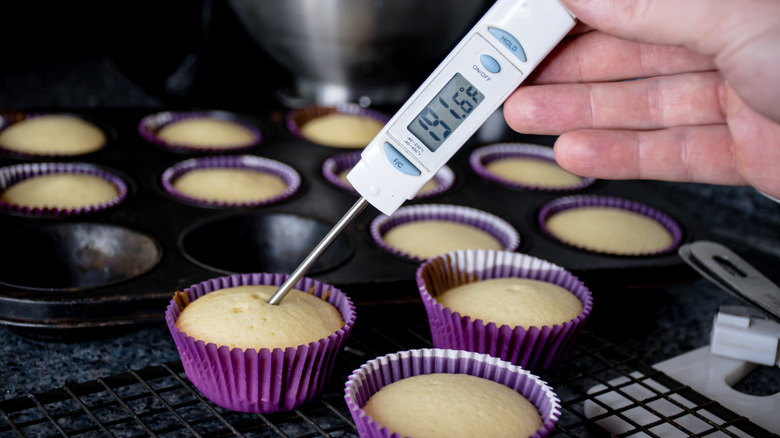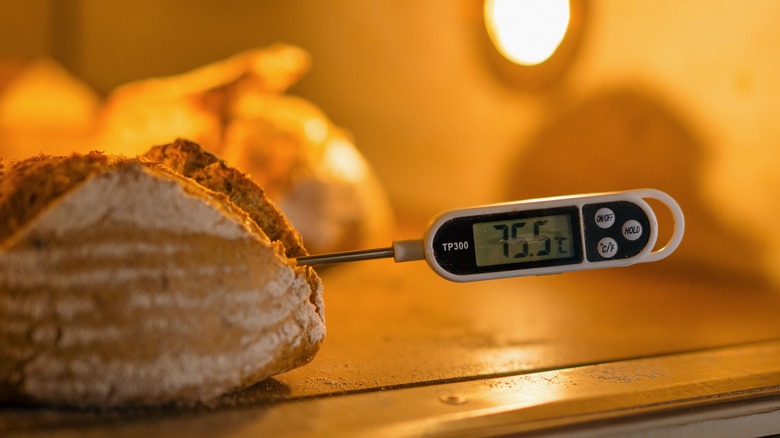Baking Is Even Easier With A Meat Thermometer On Hand
Many people contend that baking is harder than cooking. After all, there's a lot that can go wrong: Overworking dough and batter, missing one small step and completely ruining a whole recipe, attempting to get ratios right — the list of the precise sciences behind baking goes on and on. But perhaps the trickiest of all, in its own right, is knowing exactly when to pull that banana bread or cheesecake from the oven. What does "remove when slightly jiggly" even mean? There's not always much clarity in every given recipe, but there's a whole lot of room for error. Moreover, many baked goods don't cook evenly; most tend to get done much quicker on the outer edges, while the center takes some time to catch up. So, what's an even better way to gauge the doneness of a baked good other than just eyeballing it? Enter: a meat thermometer.
This simple trick ensures a perfectly done treat every single time. It's easy, fast, and best of all, it's accurate. Not to say that you still shouldn't be checking for that classic golden shade of doneness, but a meat thermometer is going to be your new best friend when it comes to precision.
Putting a meat thermometer into action while baking
When using a meat thermometer in baking, you'll want to make sure you select one with a wide range of temperatures, as many baked goods vary in their optimal internal temperature. Moreover, choosing a thermometer with high precision is key to making sure you're getting accurate readings. For whatever treat you're baking, a quick Google search can tell you what the best doneness temperature is for that specific food.
For example, the ideal internal temperature of a cheesecake is 150 degrees Fahrenheit. When following a cheesecake recipe, start by removing the dish at the minimum required bake time. Insert the thermometer, making sure you aim at the very center (the top and bottom edges will always be hotter, meaning they might be at 150 degrees Fahrenheit, but the center may still not be done yet). If the thermometer is only two or three degrees higher or lower than the ideal temperature, that's fine and it's time to remove the dish. If the temperature is still too low, place it back in the oven and cook for five more minutes, repeating this step until 150 degrees Fahrenheit is reached. These steps are exactly the same — albeit different ideal temperatures — for other recipes like quick breads, yeast breads, custards, cakes, etc.

